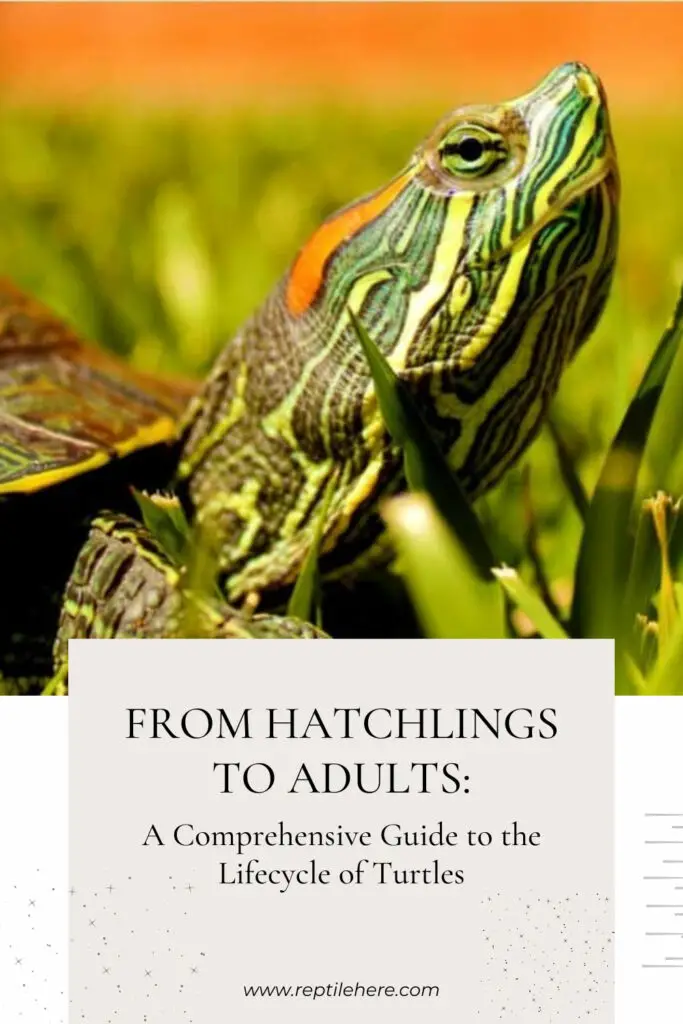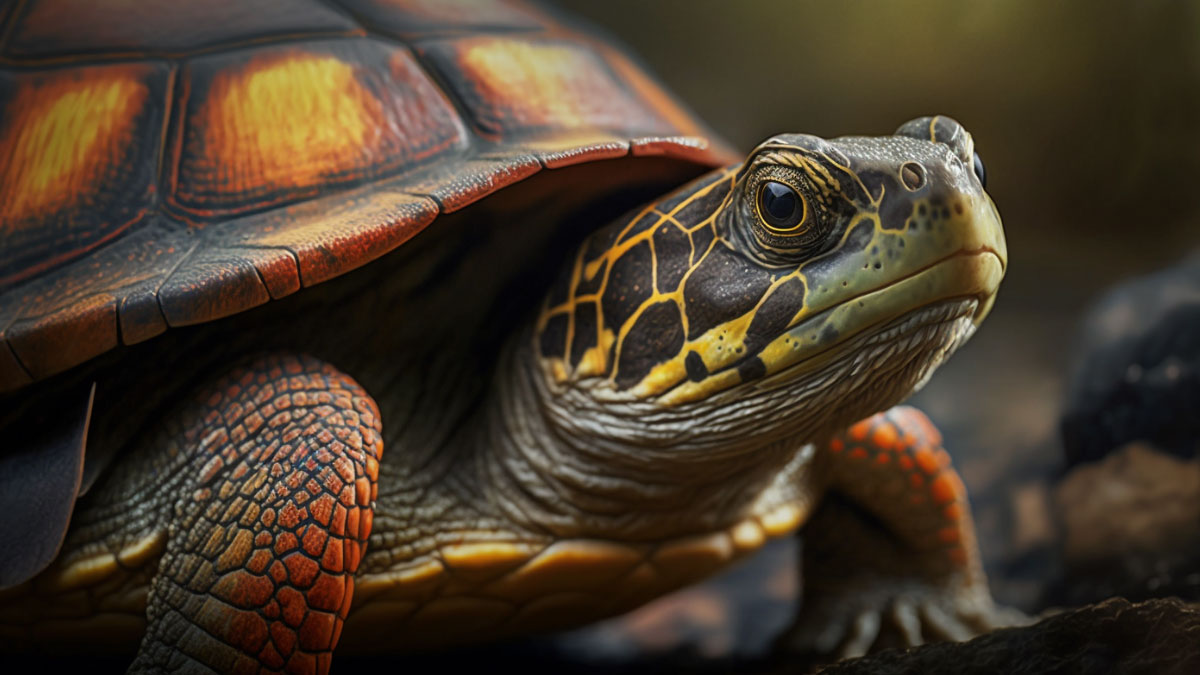From Hatchlings to Adults: A Comprehensive Guide to the Lifecycle of Turtles
Turtles are known for their longevity. But have you ever wondered how the animal reaches adulthood and lives for all those years? Well, the turtle lifecycle begins with an egg that hatches into a hatchling and then grows through various stages until it becomes an adult. Through each of its life stages, the turtle undergoes growth and development and experiences changes that prepare it for the next stage of life.
The purpose of this article is to take you through the remarkable journey of a turtle as it transits through various stages until it becomes an adult. We’ll follow a turtle as it grows from the incubation period to hatchling, juvenile, and eventually into adulthood. We’ll also discuss the turtle’s nesting habits, growth and development, and key changes the turtle experience in every stage of its life.
A Comprehensive Guide to the Lifecycle of Turtles
Contents
In a turtle’s lifecycle, the female turtle lays eggs that hatch into baby turtles (hatchlings), then they grow into juveniles, and eventually become adults.
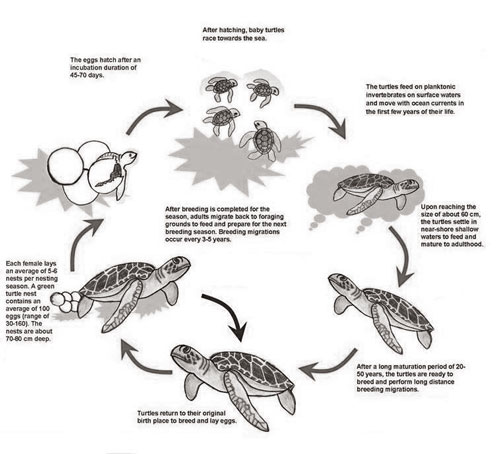
Here are the stages of a turtle’s lifecycle and the changes it undergoes along the way:
Nesting and egg laying
As we have mentioned above, the turtle’s life begins as an egg, so it’s important to touch on how a mother turtle lay her eggs and the nesting habits of turtles in general.
Essentially, a turtle will lay her eggs on the land. The mother usually digs a hole (nest) to lay her eggs and then buries them to keep them safe from predators like snakes, raccoons, seabirds, monitor lizards, etc.
Note that after burying the eggs, the mother turtle has no other business and she goes on with her life. The eggs will incubate on their own until they hatch into babies.
The number of eggs a turtle lays can be anywhere from a few to over a hundred, depending on the species.
For instance, the leatherback sea turtle lays up to 110 eggs while the hawksbill sea turtle can lay between 140 and 160 eggs at a go. A box turtle can lay 3 to 8 eggs per clutch.
Note that turtle eggs typically come in oval or spherical shapes and have a slightly softer texture than those of other eggs.
An interesting fact you need to know is that whether the eggs become male or female depends on the nest temperature during the incubation. (Source).
Watch the video below of a sea turtle laying her eggs and burying them on the beach
Video:
The hatching stage
After the incubation period is over, the eggs eventually hatch into baby turtles. These are pretty tiny and usually fall below 2 inches in size.
Note that the incubation period takes around 60 days for sea turtles or anywhere from 45 to 90 days for aquatic turtles. However, the exact period depends on environmental factors like humidity and temperature.
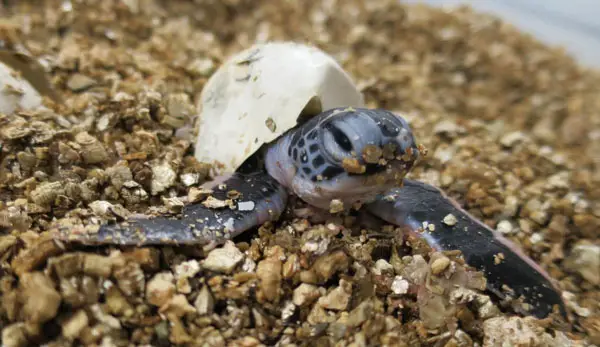
Factors such as habitat destruction and climate change can also influence the survival chances of turtle eggs.
From the time they’re hatched, hatchlings become 100% independent as there’s no mother to feed them and teach them survival skills. This is the reason baby turtles have pretty low survival chances and only a few of them see adulthood.
Mind you, baby turtles will have to dig their way out of their nest and come to the surface, where they’re highly vulnerable to predators.
Baby sea turtles are even more likely to meet their death before trekking from the beach to the waters without some help.
The turtles usually grow a temporary egg tooth known as a caruncle before they even hatch. This helps them to crack open the egg when the day to come out of the eggs arrives.
The hatchlings are known to leave their nests at nighttime to avoid predators as well as heat fatigue.
When a baby emerges from its egg, it carries with it a remnant yolk sack on its plastron underside. This is what feeds it until it grows to a point where it can start foraging for food on its own.
Juvenile turtle stage
With continued growth and development, a hatchling enters the juvenile stage. However, it’s still relatively small at this stage and still highly vulnerable to predators.
The shell of the juvenile turtle is also softer and more pliable at this stage as it hasn’t fully developed to a point of hardening like that of adult turtles. The shell can’t offer them much protection.
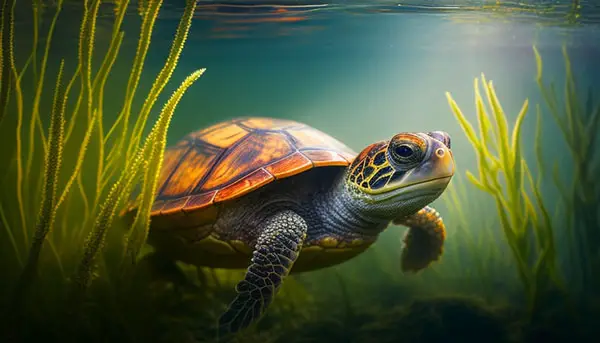
During this stage, the turtle moves to shallow waters, riverbanks, or coastal regions for sea turtles. This move is essential as these are foraging grounds that are quite productive and will provide them plenty of food until they hit the adult stage.
But the areas are also inhabited by many predators, so the juveniles have to watch their back at all times.
Interesting Fact: The turtle’s juvenile years are usually known as “lost years.” This is because they can’t be tracked and studied and too little is known about them during this phase. They spend most of their time in the open ocean away from the shorelines.
Sub-adult stage
This is a stage in between the juvenile and adult stage where the turtle has undergone a lot of growth and development but isn’t yet an adult, and it’s also not a juvenile.
During this stage, the turtle has grown pretty big in size and has started assuming the physical features and characteristics of its adult relatives. It also exhibits behavior similar to that of adults.
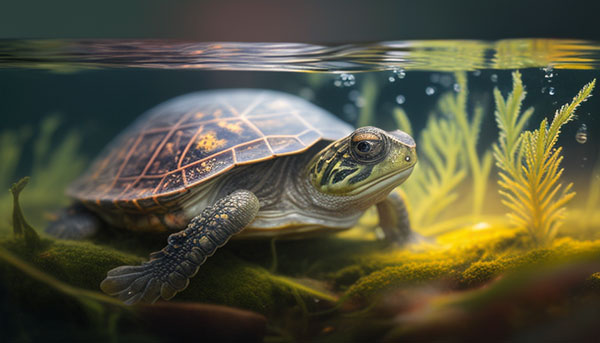
Turtles at this stage may also have sexual dimorphism, where both genders start to develop distinctive physical characteristics. But they’re not yet sexually mature.
Adult turtle
This is the final stage in a turtle’s lifecycle and is characterized by the reptile reaching sexual maturity.
However, note that the period it takes to reach this stage can vary between species. Some species such as the painted turtles take only a few years 2 to 5 years (for males) while other species can take up to decades to become sexually mature.
Note that the size of the turtle shouldn’t be used to determine its adult size as the adult size also differs among different turtle species. Some turtles remain tiny in their adulthood. Others can grow into big sizes before they even hit adulthood.
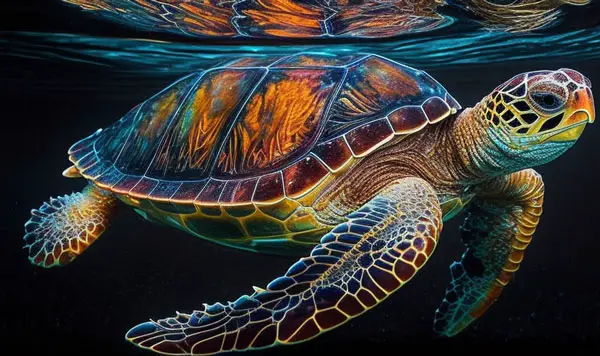
Females also tend to grow bigger than males for most turtle species.
The best way to know if your turtle is an adult is by tracking it from the moment it emerges from the eggs, through various life stages, and into an adult stage.
Adult males and females can mate. And when the female becomes pregnant, she moves to the land to build a nest and lay her eggs.
The eggs then go through incubation and eventually hatch into baby turtles and the cycle continues.
Final Verdict
That’s the fascinating journey of a turtle’s lifecycle from an egg hatched and buried into the ground to hatchling, juvenile, and eventually the adult stage. The period it takes for a hatchling to reach adulthood varies depending on the turtle species. The hatchling is the critical stage of turtle survival and not many of them make it past this stage. This is because they’re fully independent and at the same time highly vulnerable to various predators. They’ve got no mother to feed them or teach them to survive. Nonetheless, a good number of them still make it into the juvenile stage and eventually into sexually mature adults who can mate and lay eggs to continue the lifecycle.
